
William Karnet Willis was an American professional football middle guard and guard who played for eight seasons with the Cleveland Browns of the All-America Football Conference (AAFC) and the National Football League (NFL). Known for his quickness and strength despite his small stature, Willis was one of the dominant defensive football players of the 1940s and early 1950s. He was named an All-Pro in every season of his career and reached the NFL's Pro Bowl in three of the four seasons he played in the league. His techniques and style of play were emulated by other teams, and his versatility as a pass-rusher and coverage man influenced the development of the modern-day linebacker position. When he retired, Cleveland coach Paul Brown called him "one of the outstanding linemen in the history of professional football".
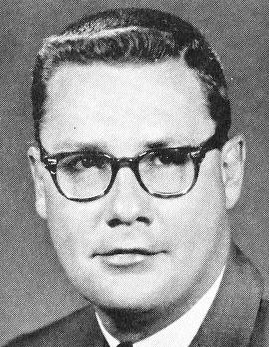
Frederick Rankin Taylor was a college men's basketball coach for Ohio State University from 1959 to 1976. Prior to that, he played baseball for the Washington Senators.

Will Herthie Shields is an American former professional football player who was an offensive guard in the National Football League (NFL) for 14 seasons. He played college football for the Nebraska Cornhuskers, earning consensus All-American honors and winning the Outland Trophy. Shields played his entire, 14-year professional career with the Kansas City Chiefs and never missed a game. Shields was selected to 12 Pro Bowls, was a 3× First-Team All-Pro, a 4x Second-Team All-Pro, and was selected to the NFL 2000's All-Decade Team. He won the Walter Payton NFL Man of the Year award in the 2003 season, was inducted into the College Football Hall of Fame in 2011, and was inducted into the Pro Football Hall of Fame in 2015.

Leslie Horvath was an American football quarterback who won the Heisman Trophy while playing for the Ohio State Buckeyes in 1944. Horvath was the first Ohio State player to win the Heisman, an award given to the best college football player in the United States. The school retired his jersey number 22 in October 2000.
Debbie Black is an American women's basketball former player and current coach. During her professional career, Black played in the Women's National Basketball League in Australia, the American Basketball League and the Women's National Basketball Association. She retired from the Connecticut Sun of the WNBA in 2005. Black was an assistant coach for the Ohio State University before being named the head coach of the Eastern Illinois University Women's Basketball team on May 16, 2013, in which position she continued until 2017.
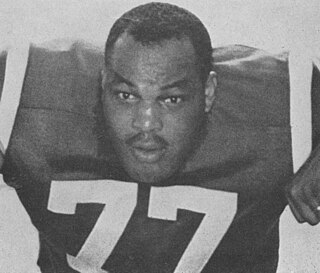
James Thomas Parker was an American professional football player who an offensive tackle and guard for the Baltimore Colts of the National Football League (NFL). He played from 1957 to 1967, and was a member of Baltimore's NFL championship teams in 1958 and 1959. He was selected as a first-team All-Pro in nine of his 11 seasons in the NFL. Parker was inducted into the Pro Football Hall of Fame in 1973.

Chester Matthias Pittser was an American football, basketball, and baseball coach at the college level. He served as the head football coach at the Montana State School of Mines—now known as Montana Technological University—from 1920 to 1921, Miami University in Oxford, Ohio, from 1924 to 1931, and at Montclair State Teachers College—now known as Montclair State University—from 1934 to 1942, compiling a career college football head coaching record of 82–45–5. Pittser was also the head basketball coach at Montclair State from 1934 to 1944, tallying a mark of 123–67, and the head baseball coach at Miami (1925–1931) and Montclair State (1935–1943), amassing a career college baseball record of 129–67–2.

Charles Wesley "Chic" Harley was an American football player and athlete, often credited with bringing Ohio State University's football program to national attention. Harley was Ohio State's first consensus first-team All-American selection and first three-time All-America selection. In 1951, he became a charter inductee in the College Football Hall of Fame.

Wesley Eugene Fesler was an American football, basketball, and baseball player and coach of football and basketball. He was a three-sport athlete at Ohio State University and a consensus first-team selection to the College Football All-America Team three straight years (1928–1930). Fesler was later the head football coach at Wesleyan University (1941–1942), the University of Pittsburgh (1946), Ohio State (1947–1950), and the University of Minnesota (1951–1953), compiling a career record of 41–40–8. He was also the head basketball coach at Harvard University (1933–1941), Wesleyan (1941–1944) and Princeton University (1945–1946), tallying a mark of 78–139 Fesler was inducted into the College Football Hall of Fame as a player in 1954.
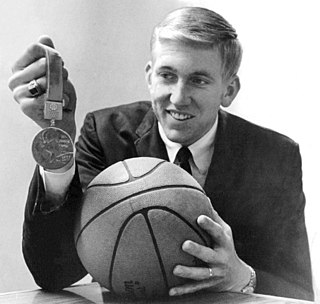
Wilmer Frederick Hosket is an American former professional basketball player. He played five seasons in the National Basketball Association (NBA) and played college basketball for the Ohio State Buckeyes.
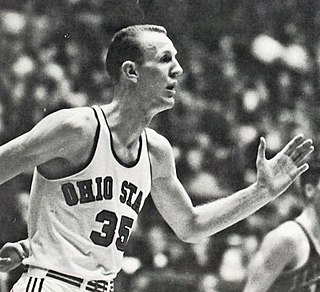
Gary Lee "Tex" Bradds was an American basketball player. After a successful college career at Ohio State, where he was the 1964 College Player of the Year, he played an integral role with the 1968–69 Oakland Oaks, the American Basketball Association champions. He attended Greeneview High School, where he scored 61 points in a game. The school's gym is named in his honor.

Lindell Lee Houston was an American football guard who played eight seasons in the All-America Football Conference (AAFC) and in the National Football League (NFL) with the Cleveland Browns. He was the older brother of Jim Houston.
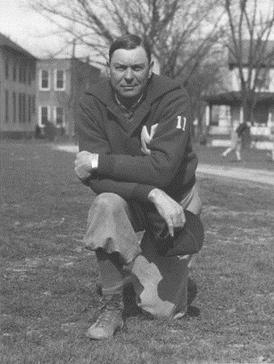
Eli Camden Henderson was an American football, basketball, and baseball coach and college athletics administrator. He served as the head football coach at Muskingum College (1920–1922), Davis & Elkins College (1923–1934), and Marshall University (1935–1949), compiling a career college football record of 164–91–13. Henderson was also the head basketball coach at Muskingum (1920–1923), Davis & Elkins (1923–1935), and Marshall (1935–1955), tallying a career college basketball mark of 621–234. As a coach in basketball, he originated the fast break and the 2–3 zone defense, hallmarks of the modern game.

The 1946 Ohio State Buckeyes football team was an American football team that represented Ohio State University in the 1946 Big Nine Conference football season. In Paul Bixler's only season as head coach, the Buckeyes compiled a 4–3–2 record and were outscored by a total of 170 to 166. The Buckeyes were ranked No. 12 in the AP Poll on November 4, 1946, but lost the final two games of their season against No. 9 Illinois and No. 8 Michigan. Right guard Warren Amling, a veterinary student, was elected as team captain.

The 1945 Ohio State Buckeyes football team was an American football team that represented Ohio State University in the Big Ten Conference during the 1945 Big Ten Conference football season. In their second season under head coach Carroll Widdoes, the Buckeyes compiled a 7–2 record, finished in third place in the Big Ten, outscored opponents by a total of 194 to 71, and was ranked No. 12 in the final AP Poll.
Jack Graf was a two-sport athlete at Ohio State University. In football he was named Big Ten MVP in 1941 and in basketball he served as team captain in 1942.

Boni Eli Petcoff was an American football tackle and coach.
William Charles Hackett was an American football guard at Ohio State University. He was a consensus All-American in 1944. After college, he became a doctor of veterinary medicine and played a part in the founding of the Cincinnati Bengals.
Evo Peter Perini was an American football fullback who played two seasons in the National Football League (NFL) with the Chicago Bears and Cleveland Browns. Born in the New Village section of Franklin Township, Warren County, New Jersey, he played at Washington High School, a predecessor to Warren Hills Regional High School. He played college football at Ohio State University.
The 1945 Big Ten Conference football season was the 50th season of college football played by the member schools of the Big Ten Conference and was a part of the 1945 college football season.














